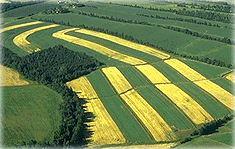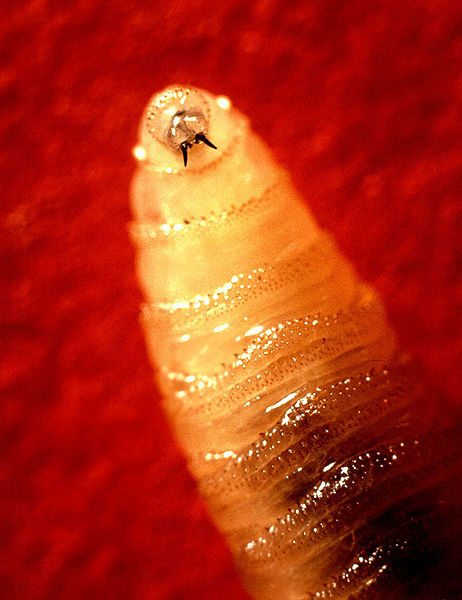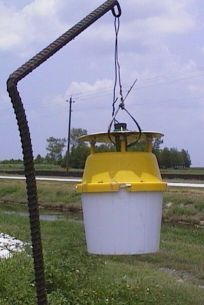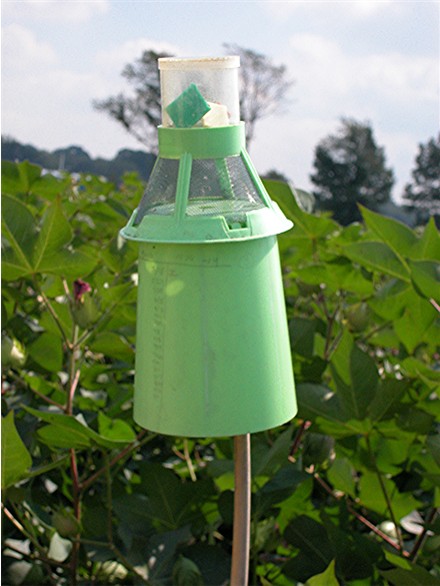|
While
pesticides have become a mainstay of the "Green Revolution" they do have a dramatic downside and in most cases are unnecessary.
Pesticides can be replaced by using new beneficial practices of agriculture. These methods
of agriculture are excellent for the environment and can provide the same effect as pesticides. They
maintain the land for use and are safe and healthy alternatives to dangerous pesticides.
Cultivation Methods
a. Some
major alternatives to pesticides are cultivation methods. Using reusable and land friendly methods of agriculture reduce
stress on soil caused by farming, weather and pests just like herbicides and pesticides do. One type of cultivation
method is interplanting. Interplanting is the process of growing two
different crops in the same are at the same time. Interplanting turns the normal monoculture fields into a polyculture.
This reduces the concentration of specialized pests and can prevent weeds from growing. Many different types of
crops can be pair. Large trees reduce weather effects on crops and legumes replenish the soil with nitrogen. Interplanting
can occur monoculture rows or in mixed rows. Crops can also be planted when one crop is a its reproductive maturity
but is not ready to be harvested. Either way interplanting can prevent the growth of weeds, replenish the soil and reduce
weathering. Another cultivation method is strip cropping. This is
the planting of crops in rows that follow the natural contours of the land. This practice prevents costly erosion caused
by wind and water. Strip cropping can be combined with interplanting to form alternating strip of crops and trees. This
reduces the amount of open area and shelters the crops from weather. Timed planting
is planting or harvesting crops when pest are not at their peak. This means harvest before caterpillars can ravage
the plant or planting before weeds get established in the soil. Proper irrigation
can also be used as an alternative to herbicides. Nearly plant specific irrigation reduces excess water so crops are
the only plants receiving water. Using conservative irrigation can reduce the weed population. Proper water leads
to stronger plants theat can resist pests better and are more stable. Finally physical removal of weeds and pests is possible. Using manual labor to remove weeds eliminates all use for
herbicides. While it can be time consuming physical removal is a for-sure way to get rid of weeds. Also bug vacuums
can suck up bugs without harming plants or releasing harmful chemicals into the environment.


Biological Controls
b. Another
alternative to pesticides are biological controls. This is were natures natural predators are used to fight pests.
Wasps and ladybugs can be introduced to a ecosystem for their insect controlling abilities. Over their lifetimes lady
beetles consume a huge number of pests. They can prevent the growth of aphid populations that could potential decimate
crops. Large parasitoid wasps lay their eggs inside hosts. As the larva develops it eats the host from
the inside-out eventually killing it.


Reproductive Controls
c. A
third alternative to pesticides is the use of reproductive controls. Reproductive controls work by removing an organism's
ability to breed. An example of this is the screwworm fly. The fly's larva lives in the living tissue of animals.
The flies were mainly a problem for cattle as they burrow into the animal's flesh they can destroy muscle and even kill a
animal. The screwworm was eradicated in 1982 using reproductive control. Thousands of sterile male screwworm flies
were released into the wild. When the sterilized flies mate with a female the female will not have any offspring.
This dramatically reduces the population of a species until in is wiped out. This process of reproductive control has
been used to control the populations of the Medfly and Apple Moth. Sterilization could potentially be used to control
all populations of crop-harming pests.

Pheromones and Hormones
d. A
fourth alternative to pesticide use is the usage of pheromones and hormones. Pheromones can be used as an attractant
for insects. They are put in traps to attract insects and them trap them so they can easily be disposed.
Pheromones traps can rid a decently large area of pests. Pheromones traps are use in small scale domestic application
to rid a yard of mosquitoes. Pheromone traps are good for the environment because they are very specific.
The traps only harm targeted organism so they can be altered for specific locations and pests. The usage of hormones
for pest management is a new idea. Hormones are released in certain insects at certain times. If a
synthetic version of a hormone is released it could cause abnormal development or premature molting causing pests to die.
Certain hormones if applied to plants can stop hunger in insects and stop them from feeding on the crops.


Quarantining
e. Finally
quarantining and restricting the importation of exotic plants and animal material can help reduce the usage of herbicides
and pesticides. If a shipment of food contains an exotic species of plant or pest, it could become invasive or quickly
spread and eat plants in an area. If an area is contaminated it can be quarantined immediately to reduce
the chance that the pest will spread to other areas. Quarantining has stopped the introduction of many pests.
Quarantining is not foolproof though it does dramatically reduce the introduction of pests into the U.S.
|

